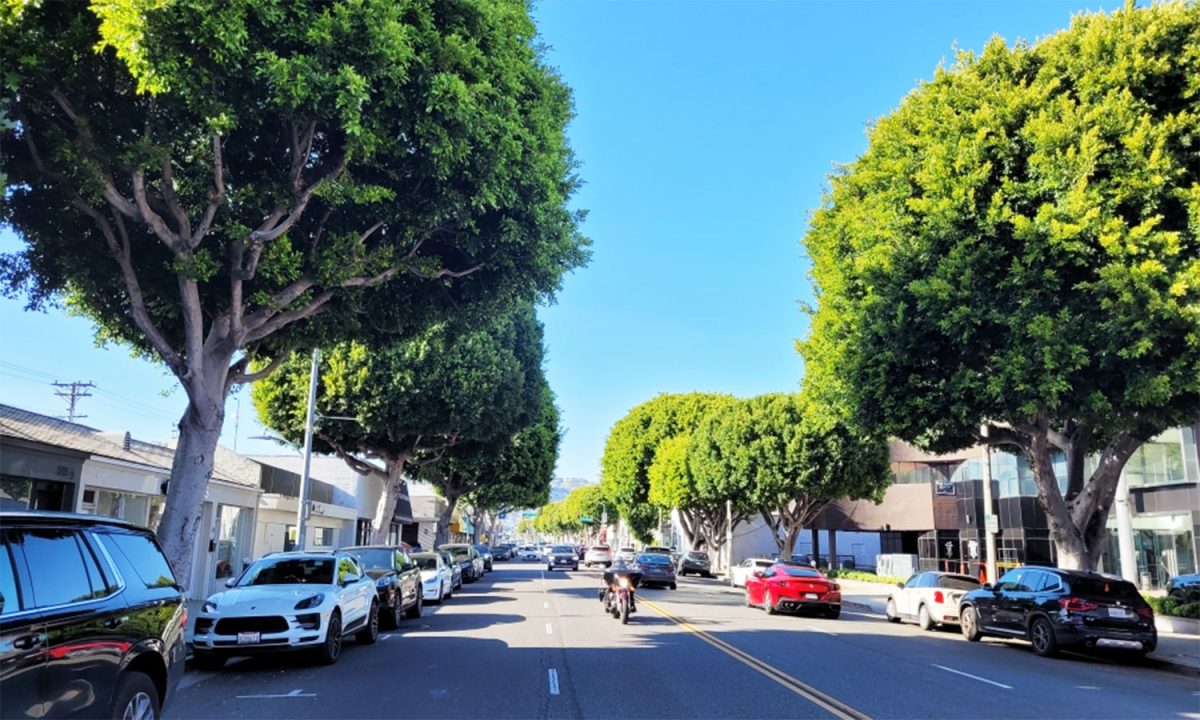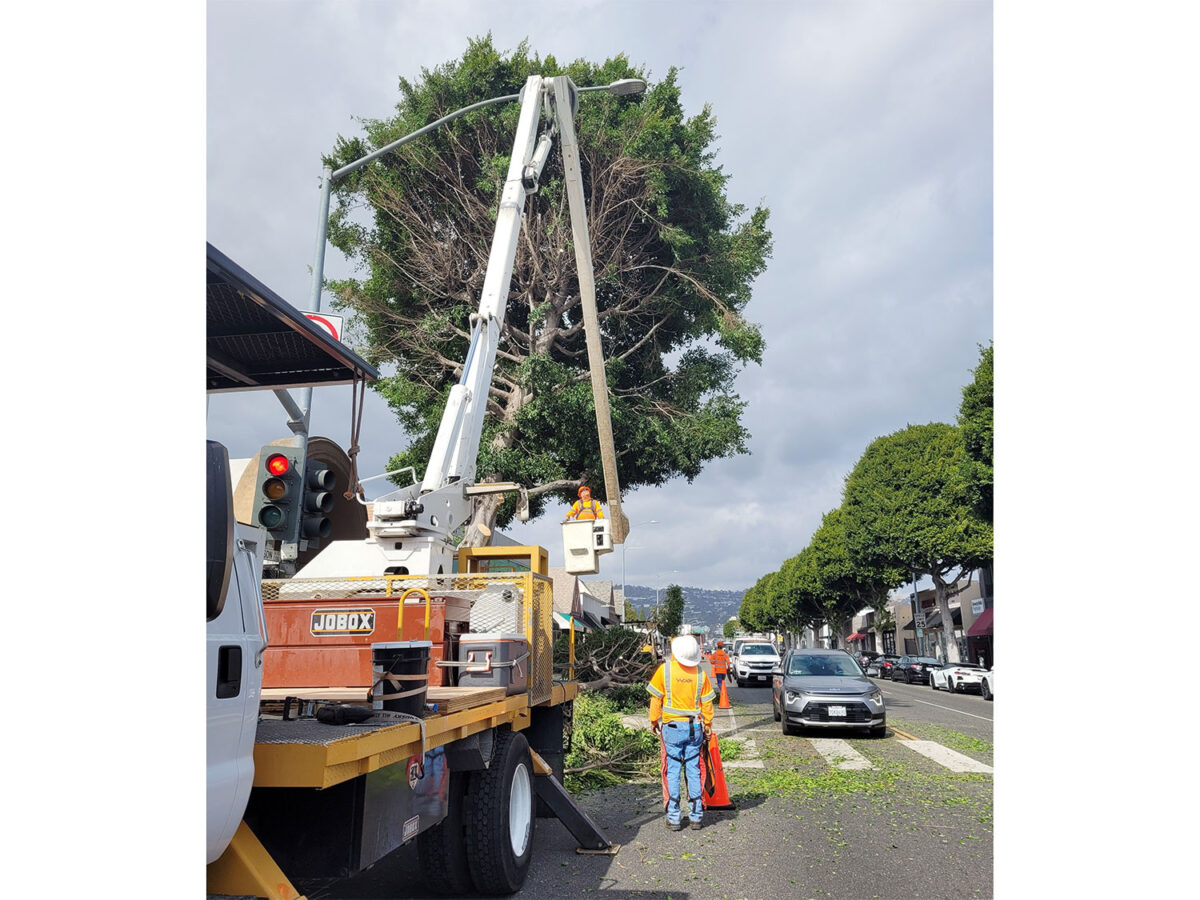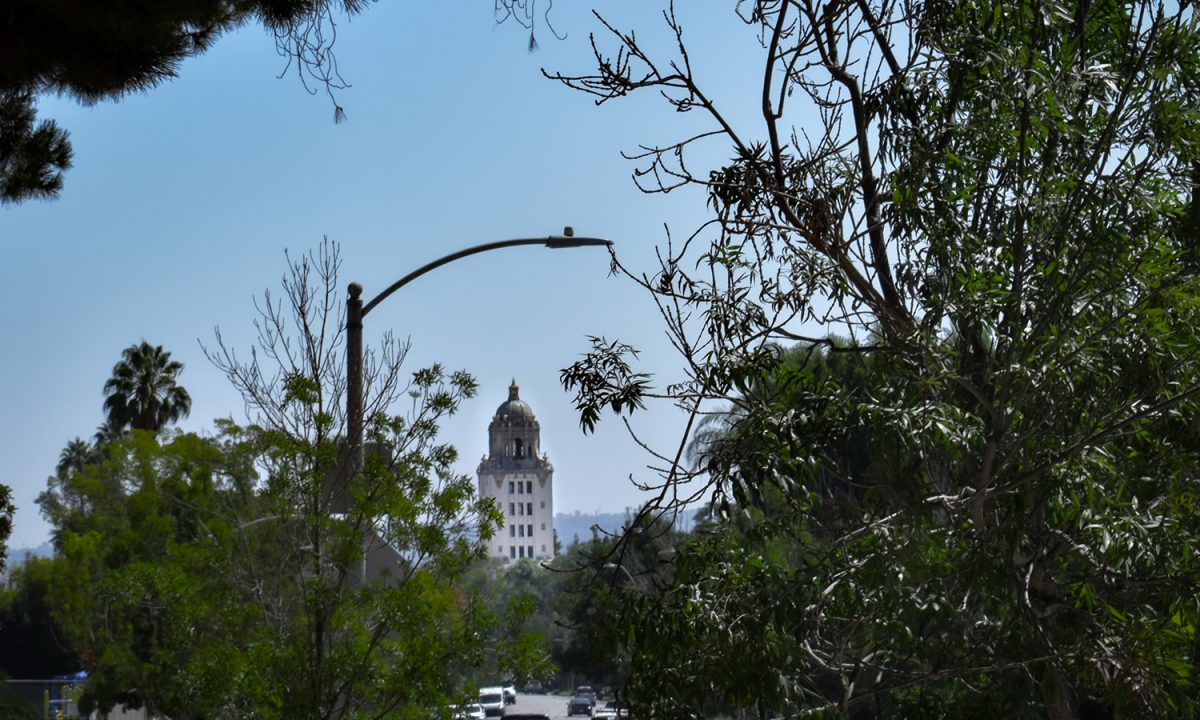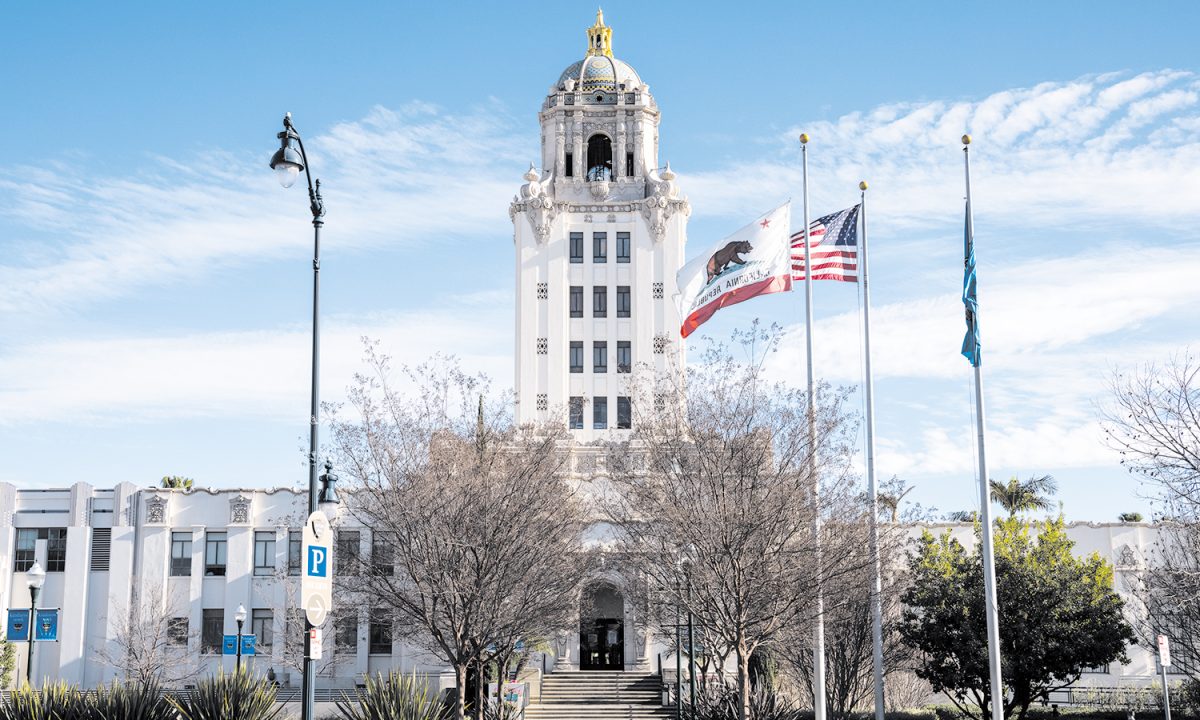The legal battle over the future of approximately 40 Ficus trees on Robertson Boulevard remains stayed, while the Court of Appeals rules on the city of Beverly Hills’ request to replace the Superior Court judge presiding in the case.
On March 30, Superior Court Judge Richard L. Fruin, Jr. granted a restraining order to temporarily halt the city’s removal of Ficus trees under the Robertson Boulevard sidewalk repair program. The city then filed a request to recuse Fruin from the case.
City Attorney Larry Wiener declined to provide details on why the city is seeking a new judge.
Jamie Hall, an attorney representing the plaintiffs, filed a brief on April 20 requesting that Fruin remain the judge and said he expects the Court of Appeals to make a decision sometime in May.
The underlying case was initially filed in March by a group of community members organizing as the Robertson Boulevard Task Force. They are asking the court to overrule approval of the repair program in order to preserve the Ficus trees and their associated environmental benefits.
Prior to filing the lawsuit, residents took their concerns to City Council, which on Feb. 21 declined to take action to halt the removals.
“The remaining trees are literally our population of shade in our area, so by removing them the city is increasing our heat island effect and losing the carbon sequestering benefits of the trees,” said local resident Wendy Klenk, who is spearheading the effort to save the trees.
The city, however, maintains that the removals are necessary because the tree roots are damaging the sidewalk and creating a trip and fall hazard that could harm residents and create legal woes for the city.
“It is important to the city that people are able to walk or use other mobility enhancing devices without fear of stumbling over Ficus tree roots that have raised the sidewalk,” said City Attorney Larry Wiener in a written statement.
The council approved the sidewalk repair program, which included plans to remove around 87 Ficus trees and replace them with crape myrtles and Mexican fan palms, in December 2022. The removals began on Jan. 24 and some 60 trees have been taken down so far.
After the temporary restraining order was granted, the city initially asked Fruin to recuse himself from the case, which Fruin declined to do, prompting the city to take its request to the Court of Appeals, Wiener said.
Hall, who represents the Robertson Boulevard Special Task Force, said a request to replace a judge is “very rare.”
“I’m sure that the city is upset that he ruled in our favor, because right after that hearing they went back to their office and filed that special challenge,” said Hall. “However, I’m just speculating because I can’t get into their head.”
Once the Court of Appeals makes a decision, the judge – whether it be Fruin or a replacement – will rule on the task force’s request for a preliminary injunction. If the injunction is granted it will halt the Ficus tree removals until the judge rules on the lawsuit as a whole.
Hall said the judge will weigh two factors when deciding whether to grant the preliminary injunction: whether the petitioner is likely to succeed in the lawsuit based on merits of the case and who is likely to suffer more irreparable harm if the injunction is not granted.
“I think my client will certainly have more irreparable harm than the city because once those trees are gone, they can never be replaced,” said Hall. “A Mexican fan palm will never provide the same degree of shade and a crape myrtle takes 20 years to mature.”
The debate over the ecological benefits of mature Ficus trees versus the city’s replacement trees is a key issue in the lawsuit. The city did not complete a full environmental impact report as it determined the sidewalk repair program to be exempt from the California Environmental Quality Act (CEQA).
“The city does not believe that there is a significant environmental impact from replacing the street trees,” said Wiener. “The street trees will be replaced by crape myrtle trees which will have a full canopy and will not cause damage to the sidewalks and sewers as the Ficus trees have previously done.”
As part of its legal filings, the city submitted a declaration from Urban Forest Manager Ken Pfalzgraf attesting to the environmental benefits of the replacement trees.
“The Mexican fan palm and crape myrtle trees have similarities to Ficus trees in terms of the benefits they provide,” stated Pfalzgraf, adding that the crape myrtle will “provide an equal amount of shade as the Ficus on Robertson Boulevard.”
The task force disagrees and submitted several declarations from arborists attesting to the environmental consequences that they believe will result from the city’s plan.
“Neither the crape myrtle nor the Mexican fan palm will provide an ‘equal amount of shade’ to the existing Ficus trees on Robertson Boulevard,” stated licensed arborist Carl Mellinger, referencing Pfalzgraf’s statement. “The Mexican fan palm has a canopy width of just 5-10 feet, according to SelecTree. The crape myrtle has a canopy width of 15-25 feet according to SelecTree.”
Diana Nicole, ecological horticulturist and director of the Los Angeles Audubon Society, raised concerns about the impact on birds.
“Mr. Pfalzgraf fails to take into account the fact that resident and migratory birds in urban areas need space,” she stated.
When it comes to tenants on the streets, there are mixed feelings about the removal plan.
Debra Carter, showroom manager at Carter Hardware, supports the removal of the Ficus trees as her business has suffered heavy damage from the trees’ invasive roots.
“Our showroom management has spent close to $20,000 over the years addressing issues from the trees,” she said.
Carter said she believes the community members fighting the tree removals are well-intentioned but are failing to look at the big picture.
“It’s great and wonderful to try and save the trees but at the same time how do you save the lives of the elderly people who are tripping on the sidewalk,” said Carter.
On the other hand, seven Robertson Boulevard tenants submitted declarations to the court expressing a desire to save the remaining trees and concerns about the impact of their removal.
“My business will be negatively impacted due to this action,” stated Lex Gianakos, the property manager at 319 S. Robertson Blvd. “Our electrical bills will increase significantly due to the loss of shade. The glare of the sun will force me to purchase blinds and window treatments.”
Ultimately, it will be up to the court to analyze the environmental impact of the removals and decide whether the city was justified in claiming an exemption from the California Environmental Quality Act.







